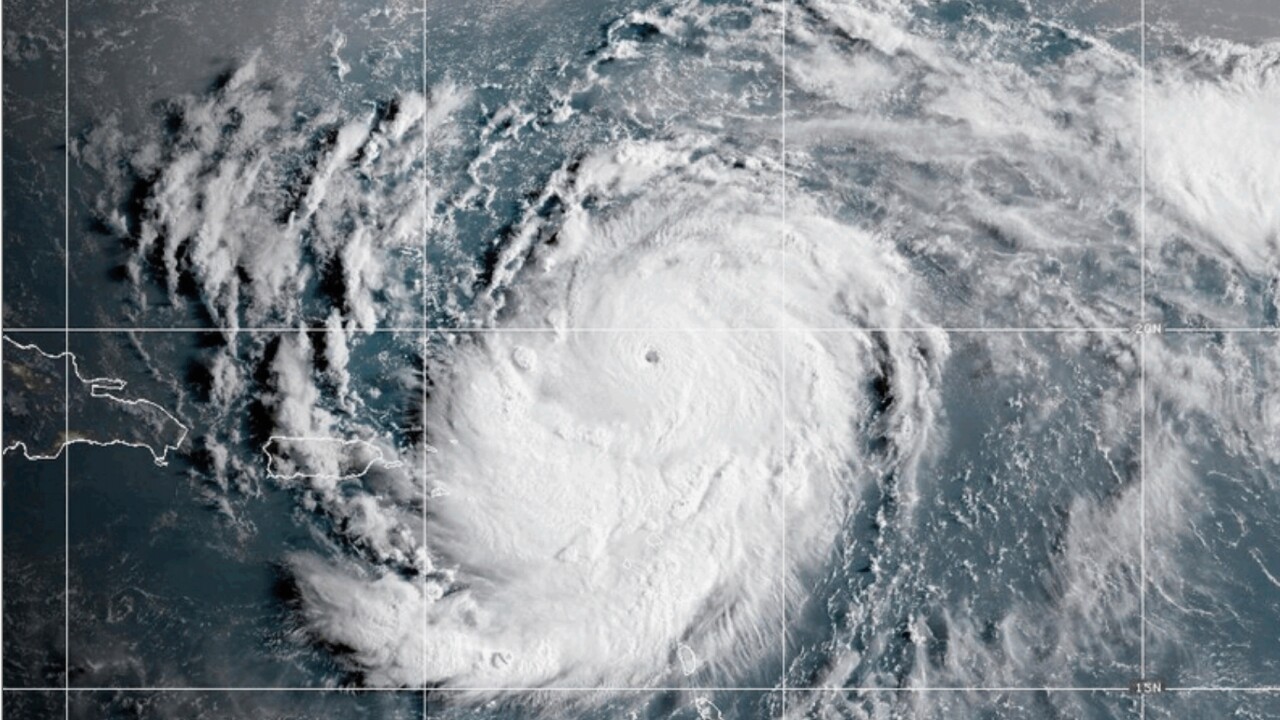As its outer bands continued to batter Puerto Rico and the Virgin Islands with tropical-storm-force winds and torrential rainfall, Hurricane Erin fell to a Category 3 hurricane on Sunday.
Forecasters issued tropical storm warnings for the Turks and Caicos Islands and a watch for the southeast Bahamas as the storm’s overall size increased and Erin’s maximum winds decreased.
Although it wasn’t anticipated that the storm would directly affect the East Coast of the United States, it might cause rip currents throughout the whole Southeast coast if it doubled or tripled in size. By midweek, portions of the highway connecting the North Carolina Outer Banks may be washed out by strong gusts and surging tides, according to the National Weather Service.
According to forecasters, Bermuda may experience similar circumstances when Erin turns north and then northeast.
The first Atlantic hurricane of 2025, Erin, peaked on Saturday at 160 mph and then weakened to Category 5.
The National Hurricane Center in Miami reported that the storm’s maximum sustained winds reached 125 mph late Sunday morning.
As the storm underwent internal adjustments, the winds weakened. Forecasters predicted that Erin will continue to be strong for a few days.
You are facing a powerful hurricane. It varies in intensity. According to Richard Pasch of the National Hurricane Center, the hurricane is deadly regardless.
RELATED STORY | In just one day, Hurricane Erin intensifies into a potent Category 5 hurricane.
Erin’s center was traveling west-northwest at 13 mph and was roughly 200 miles north-northwest of San Juan, Puerto Rico, and 240 miles east of Grand Turk Island.
According to Luma Energy, a private organization that manages the transmission and distribution of electricity on the island, around 147,000 customers in Puerto Rico were left without power Sunday morning due to the rain and gusts from the storm’s outer bands. More than 20 flights were canceled due to the weather, according to officials.
Over the next few days, experts predicted that parts of the Virgin Islands, Puerto Rico, Hispaniola, and the Turks and Caicos Islands will also experience swells.
According to the hurricane center, a tropical storm warning indicates that tropical storm conditions are anticipated inside the warning region, in this case, within 24 hours. Three to six inches of rain, with up to eight inches in certain isolated places, are still predicted for the Virgin Islands and Puerto Rico.
A tropical storm watch was also issued by the Bahamas government for the Southeast Bahamas.
Scientists have connected climate change to the growing intensity of storms in the Atlantic. Ocean temperatures are rising because to global warming, which also causes the atmosphere to store more water vapor. Warmer oceans provide hurricanes with fuel to intensify and release more rain.






